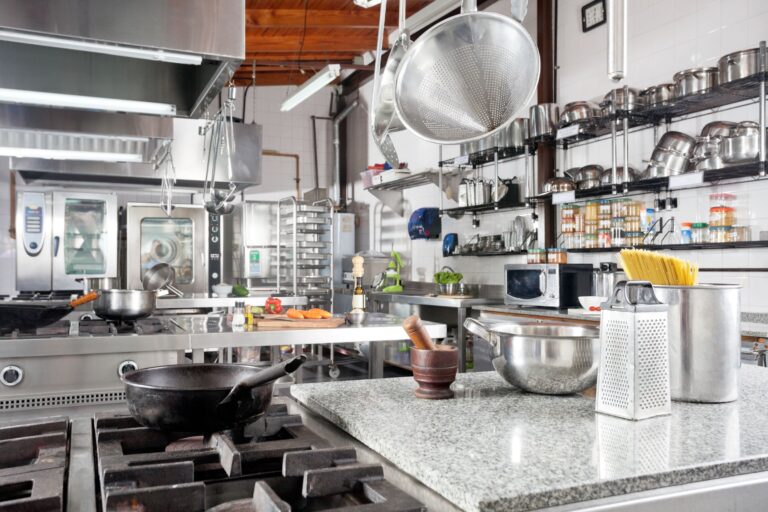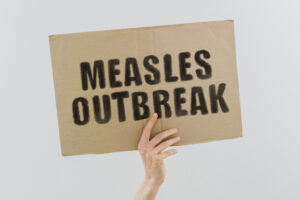If you were to overhear the words “ghost,” “cloud,” “shadow,” and “dark” in someone’s conversation, it’s unlikely that your first thought would be, “Oh, they are talking about restaurant kitchens.” Yet, those very words are becoming increasingly common in restaurant delivery conversations.
Ghost, cloud, shadow, or dark kitchens are four of the words used to describe the increasingly popular multi-tenant commercial kitchens defined by Modern Restaurant Management as “professional food preparation and cooking facilities set up for the preparation of takeout or delivery-only meals.” They are also called (more descriptively) delivery, virtual, or commissary kitchens, or even simply delivery-only or online-only restaurants. In any case, they are generally located in a shared, collective commercial facility set up specifically for the purpose of producing food for delivery.
While the virtual kitchens have been in existence for the last several years, the significant increases in consumers ordering restaurant delivery during the pandemic has had a positive impact on their growth. And the expectation is that, while consumers will eventually return to dining in restaurants, a penchant for delivered foods also will remain.
As you can imagine, a shared facility can provide for a great economic model, as well as opportunities to test limited menu items or brands, and separate your delivery orders from those of dine-in patrons, which do require some differences in preparation. Many current dine-in or QSR restaurants have very limited kitchen space and, with the pre-pandemic growing demand for catering orders, this was putting pressure on what was already a tight space and thus creating new risks. As the pandemic recedes, we anticipate that catering orders will again pick up. So while there are some attractive components to the ghost kitchen model, there are also risks that go beyond those of a standard foodservice kitchen that need to be managed, particularly those related to food safety and employees.
Food Safety. Working in a facility that is not only owned by someone else, but also has other tenants over whose actions you have no control, reduces your ability to ensure structural and environmental conditions and policies that could impact the safety of your foods. Take, for example share storage areas. While you would require the separation of allergenic and non-allergenic foods in your own facility, you likely have little control over such requirements for others in a shared space. And if a worker of another company sets an allergenic food next to or on a shelf above your non-allergenic food, cross contact could result. Similarly, controlling the temperatures of shared refrigeration could be a challenge and subject foods to potential risk, such as pathogen growth. As such, before leasing space in a facility, you will want to review the tenant requirements that could impact the safety of your foods, and ensure they correspond with your policies and practices.
Food safety issues can also extend to the delivery of the food once prepared. As such, it is critical that some research be conducted to determine the best packaging for product safety – as well as for quality, as a consumer is unlikely to order a second time if the first was not up to the expected standard. Consider, as well, the delivery system used, which likely is conducted by a third party. What safety standards do they have in place for their drivers?
In both the facility preparation and delivery, it also is critical that you know and understand all federal, state, and local regulations that are applicable to your situation. State and local regulations and regulatory bodies can differ, and various licensing may be required which may differ from that of your dine-in or QSR restaurant.
Employees. Businesses that utilize multi-tenant food-preparation facilities may staff with employees from their dine-in or QSR facilities, but many choose to hire hourly “gig” workers to account for the often inconsistent nature of the orders. In addition to managing this variability, you also need to consider the other workers of the other businesses in the facility – over which you will have no control.
One potential issue in the area is that of public health; that is, how do you manage not only the food safety, but also the health of your employees, if others are not managing theirs. What do you do if workers for other business come in while ill? Who is responsible if someone vomits in a common area? Who cleans it up? How will you hear about it – and manage any potential risk – if you’re not there when it happens?
While a ghost kitchen can be an economical way to conduct the delivery aspects of your business and operate in the cloud, there can be some dark shadows of risk as well. If you are considering taking your business in this direction, be sure you consider all aspects prior to making the commitment.
TAG’s food safety and public health experts can help you assess those risks to help ensure you make the right decision for your business.





